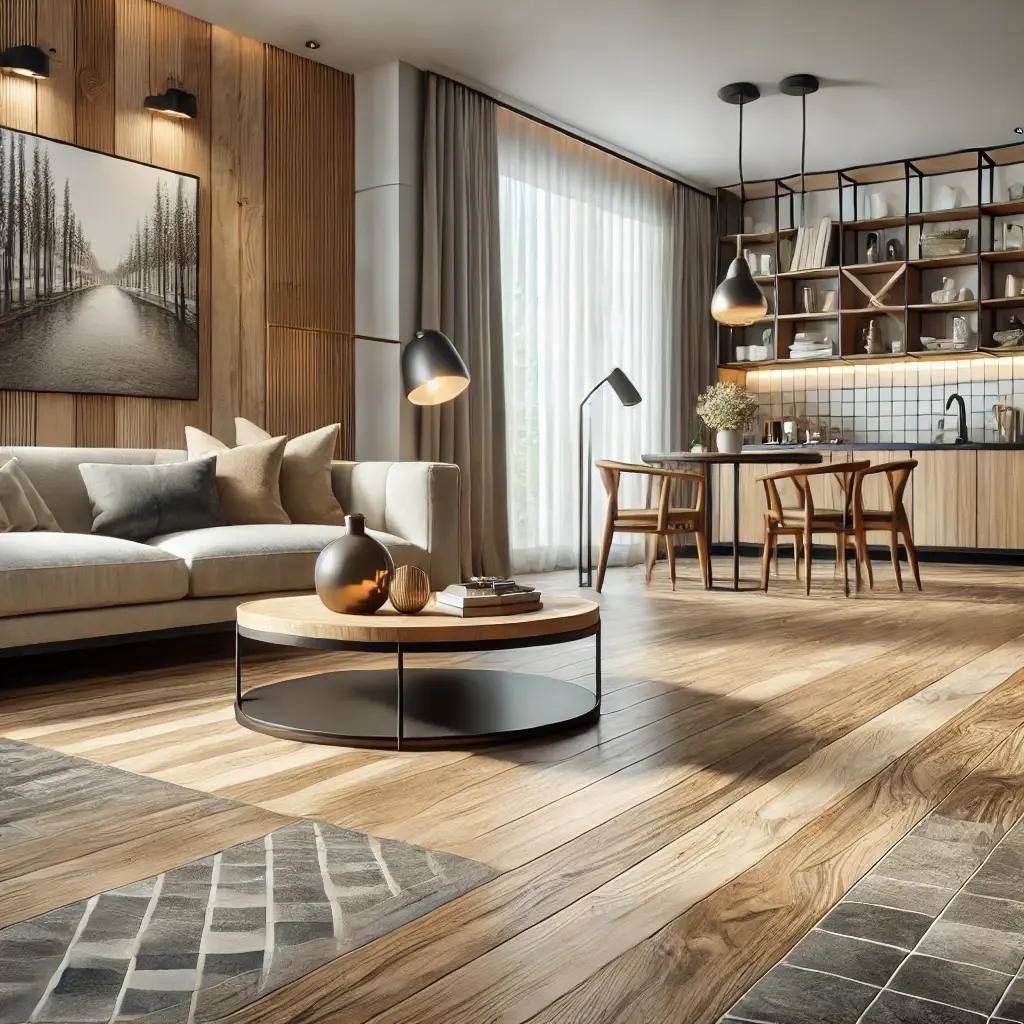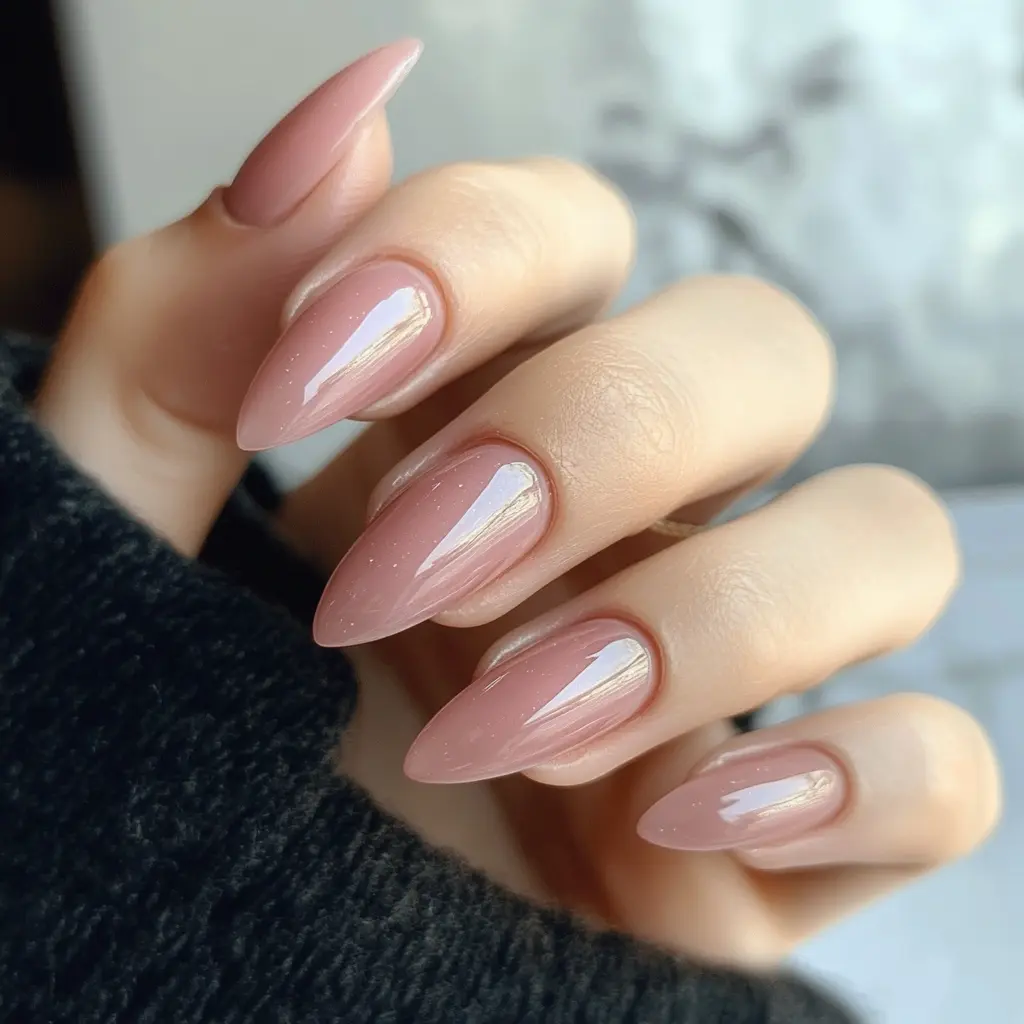
The water resistance, versatility and attractive aesthetics of hybrid flooring make it appealing to Australian homeowners. But the simplicity, overall aesthetics, durability, and streak-free design of hybrid flooring makes it suitable for every home type and family. In this article, we will define what is hybrid flooring, examine its advantages over laminate and vinyl and explain how to select the most suitable hybrid flooring for your space.
What is Hybrid Flooring?
A mixture of laminate and vinyl planks is used to manufacture hybrid flooring, which makes it a strong product that is versatile as well. This mixture resulting from the adoption of multiple technologies renders hybrid laminate flooring entirely waterproof which proves useful in areas such as kitchens, bathrooms and laundries where traditional wood or laminate would have been ineffective.
Hybrid floors consist of multiple layers:
- A rigid base layer provides stability, and a top vinyl or laminate layer displays a printed design, offering a natural look similar to real wood. This multi-layer construction ensures durability, water resistance, and a realistic appearance.
Key Features of Hybrid Flooring
Waterproof Design : Because hybrid flooring is completely waterproof within a specific range of temperature, it is excellent for use in wet or extremely humid climates.
Durability: Hybrid flooring is ideal in areas with heavy foot traffic as it is resistant to stains, dents and scratches all while being able to outlast the traffic.
Easy Installation: Most hybrid flooring options have a click-lock method which makes sure ease of doing it yourself. Besides, hybrid floors come with underlays that create a sensation of coziness and dampen sound.
Variety of Styles: Hybrid flooring is available in diverse colors and patterns that closely resemble natural surfaces such as wood, stone and more.
How does Hybrid Flooring Work?
Hybrid Flooring is comprised of various layers all of which have their own specific roles.
UV Coating Layer: This layer protects the floor from fading and damage, giving it a long-lasting lifetime.
Wear Layer: This layer protects the flooring from abuse, scratches, and dents.
Design Layer: This layer is printed with a pattern which imitates wood or stone thus enhancing the appeal of the floor.
Core Layer: This layer is made of plastic and limestone and provides sturdy stability and resistance to water.
Underlay: Comfort and sound insulation are provided by built-in them which also reduces footstep noise.
Pros of Hybrid Flooring
Due to hybrid flooring’s great characteristics, it has been able to find a home in many residences. Some of the advantages are:
Waterproof: The laundry, bathroom and kitchen which are usually wet areas can use this type of flooring.
Low Maintenance: Requires only a quick sweep or mop to keep clean.
Fade Resistance: Homes in Australia which are mostly surrounded by Sunlight can benefit from this feature.
Noise Reduction: Other hard floors are much noisier compared to this one as it has sound dampening features.
Cost-effective: Hardwood may cost more but a hybrid flourishing can add a similar appeal to your flooring.
Why Consider Hybrid Flooring Over Laminate?
While hybrid and laminate flooring share some similarities, there are notable differences:
Water Resistance: While we all know about the increased water resistance of laminated flooring, it is indeed the hybrid flooring that is more promising because it’s completely waterproof. It can be used in kitchens, bathrooms and other moisture prone areas.
Durability: The presence of a thicker wear layer in hybrid flooring expands its scratch and stain resistance as well.
Ease of Maintenance: Hybrid flooring might be better at tackling spills and cleaning dirt on it while laminate might have a tougher time dealing with an overabundance of spills in certain areas.
Installing Hybrid Flooring
One of the benefits of hybrid flooring is that it is very straightforward to install. Here’s an outline of the ideal sequence of actions.
Prepare the Floor: Before you start placing the flooring, ensure the subfloor is clean, dry and set at level.
Lay Underlayment: It is very common for a substantial amount of hybrid flooring to already be fitted with a built-in underlay, but in certain installations it would be necessary to use extra underlay for added insulation.
Begin Installation: A large number of hybrid flooring does not require the use of glue or nails as the planks are glued instead via locks.
Cut to Fit: In order to cut the access of utility knives or a saw to the corners and edges of the planks to enhance fitting of the flooring,
Finish the Edges: Use skirting boards or trims for a professional look.
Why Hybrid Flooring is Ideal for Australian Homes
The low maintenance, durability, and versatility of hybrid flooring have made it increasingly popular in Australia. It adapts well to the country’s diverse climates, from hot and humid to cool and dry. Furthermore, hybrid flooring is more affordable for people who want the appeal of hardwood without the expenses and upkeep as it is a composite product available in a multitude of designs.
Conclusion
If you are in Australia and looking for a stylish and water-resistant floor, you should definitely consider hybrid flooring. Some other features that make it suitable for Australian homes are quick installation, easy maintenance, and cost effectiveness. If you are looking to freshen up the house or want to restore the kitchen or remodel the bathroom, hybrid flooring is the perfect modern option suitable for Australian homes.
Read also: What is engineered stone?






